In the world of golf, the assortment of clubs available reflects the game’s nuanced demands, providing players with a toolkit to navigate diverse challenges on the course.
From drivers designed for powerful tee shots to delicate wedges crafted for precise short game maneuvers, each type of golf club serves a specific purpose.
Understanding the intricacies of these clubs empowers golfers to make strategic decisions, optimize their performance, and master the art and science of the game.
This exploration into the types of golf clubs unveils the versatility and sophistication inherent in golf equipment, offering insights into the tools that shape the golfer’s journey across the fairways and greens.
Types Of Golf Clubs
Understanding the diverse array of golf clubs is essential for golfers aiming to navigate the course with precision. Each type serves a specific purpose, catering to various shots and situations.
Here are seven types of golf clubs, each uniquely designed to enhance a golfer’s versatility and performance
Driver
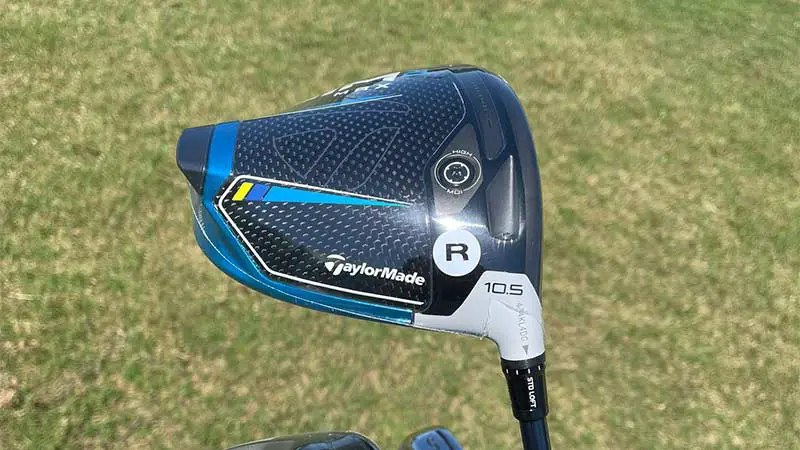
The driver, often called the 1-wood, is designed for maximum distance off the tee. Characterized by a large head and long shaft, it is used to launch the ball at the beginning of each hole, providing golfers with the potential for impressive distance.
Fairway Woods
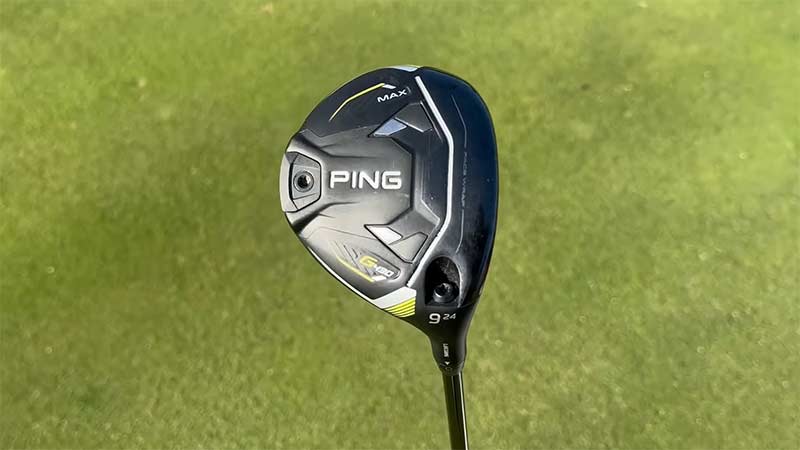
Fairway woods, numbered 3, 5, and 7, are versatile clubs suitable for shots from the fairway or rough. They combine distance and accuracy, making them ideal for longer approach shots or getting out of challenging lies.
Irons
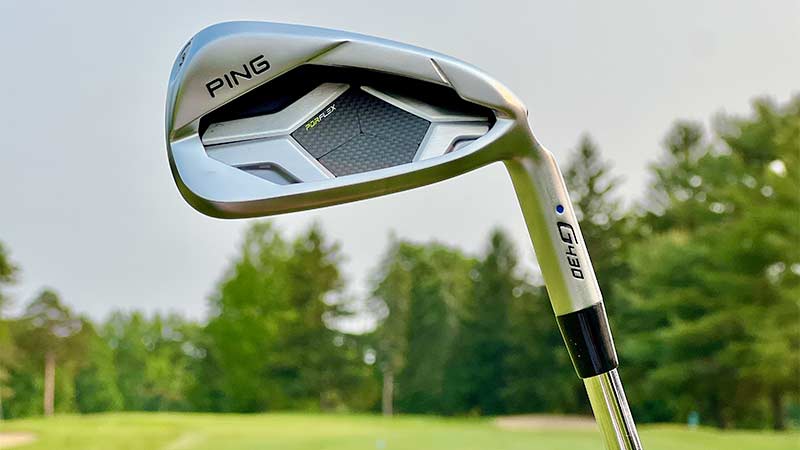
Irons, numbered from 3 to 9, are essential for precise approach shots. Each iron has a different loft, with lower-numbered irons producing lower, longer shots and higher-numbered irons providing higher trajectories and shorter distances.
Hybrid Clubs
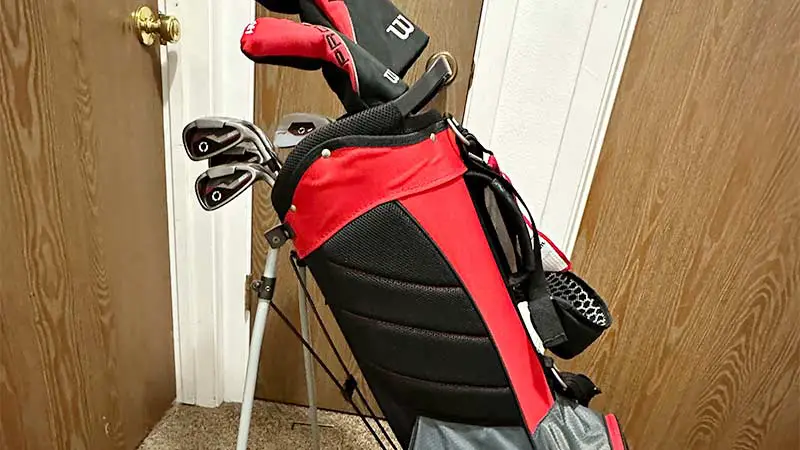
Hybrid clubs blend the characteristics of irons and fairway woods. Numbered similarly to irons, they offer forgiveness and versatility, making them valuable for various situations, especially when golfers need distance with control.
Wedges
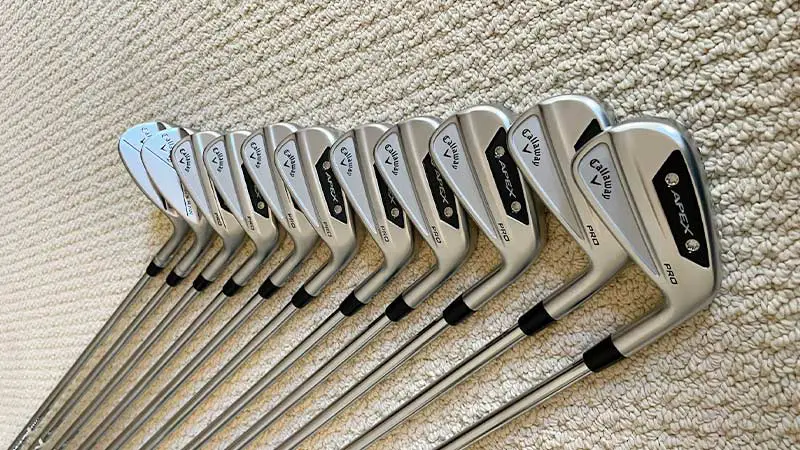
Wedges, including the pitching wedge, gap wedge, sand wedge, and lob wedge, are designed for short, specialized shots around the green. They provide high loft and spin, helping golfers navigate bunkers, chips, and delicate pitches.
Putter
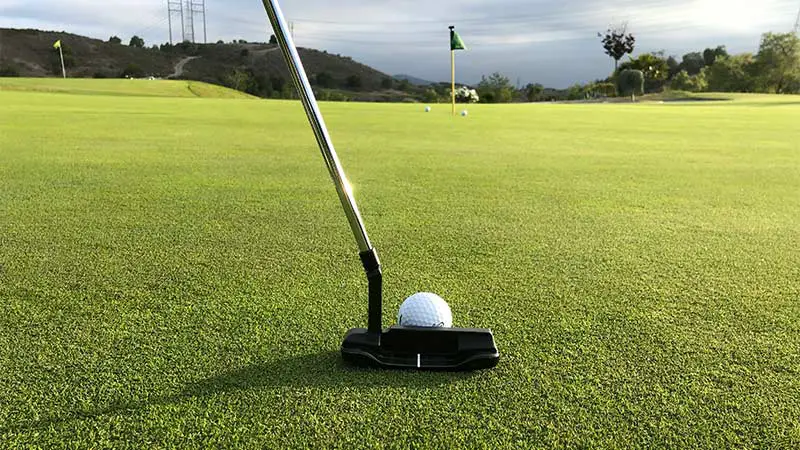
The putter is a crucial club used on the green to roll the ball into the hole. It has a flat face and is designed for precision and control, making it an essential tool for mastering the art of putting.
Specialty Clubs
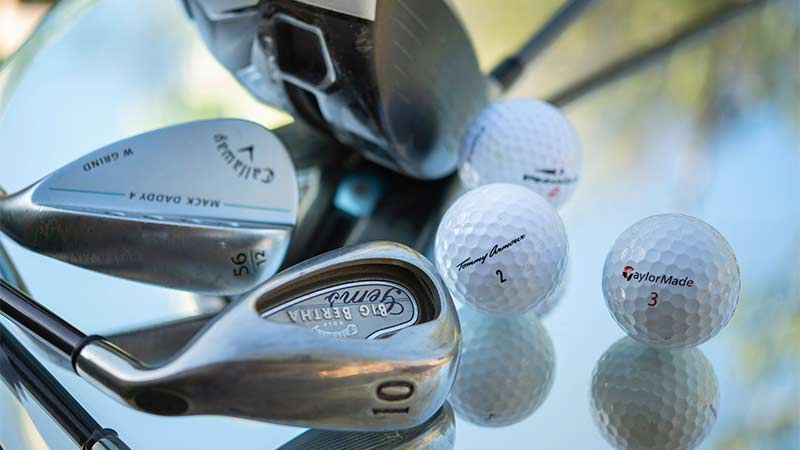
Specialty clubs, such as chippers or utility clubs, serve specific purposes. Chippers are designed for low-lofted chip shots, while utility clubs are versatile options that golfers can customize to suit their playing styles and preferences.
How To Choose A Golf Club?
Choosing the right golf clubs is a pivotal aspect of optimizing performance on the course. With a myriad of options available, golfers must consider various factors to tailor their equipment to individual playing styles.
Here are some tactics to guide golfers in selecting the most suitable clubs for their game:
Assess Your Skill Level
Begin by honestly assessing your skill level. Novice golfers may benefit from forgiving and more versatile clubs, while experienced players may opt for clubs that offer greater control and customization options.
Consider Your Swing Speed
Understanding your swing speed is crucial in selecting appropriate clubs. Golfers with faster swings may prefer clubs with lower lofts for optimal performance, while those with slower swings benefit from higher lofted clubs to achieve better trajectory.
Test Clubs
Before making a purchase, take advantage of club-testing opportunities. Experiment with different brands, models, and club types to identify the ones that feel comfortable, provide the desired feedback, and complement your swing mechanics.
Seek Professional Advice
Consulting with a golf professional or club fitter can offer invaluable insights. Professionals can analyze your swing, recommend suitable club specifications, and ensure a custom fit tailored to your unique physical attributes and playing style.
Evaluate Your Playing Preferences
Consider your playing preferences and the types of shots you frequently encounter. If you enjoy versatile shots from the fairway, opt for clubs with a balance of distance and accuracy. Assessing your playing style aids in selecting clubs that align with your strengths.
Analyze Clubhead Design
Different clubhead designs influence ball flight and playability. For instance, cavity-back irons offer forgiveness and a larger sweet spot, while blade irons provide more control but require precision. Choose a design that matches your needs and preferences.
Budget Considerations
While investing in quality clubs is essential, consider your budget. Many reputable brands offer a range of options at various price points. Prioritize clubs that strike a balance between performance and affordability to ensure a worthwhile investment.
By incorporating these tactics into the club selection process, golfers can assemble a set of clubs that complements their skill level, playing style, and overall preferences.
Tailoring equipment to individual needs contributes to a more enjoyable and successful experience on the golf course.
FAQs
What’s the difference between cavity-back and blade irons?
Cavity-back irons have a larger sweet spot, providing forgiveness and stability, making them suitable for less experienced golfers. Blade irons offer more control and precision but require a higher level of skill due to a smaller sweet spot.
Can I customize my golf clubs?
Yes, golf clubs can be customized to match your individual specifications. Club fitters can adjust shaft length, lie angle, and grip size to optimize performance based on your swing mechanics and physical attributes.
Are hybrid clubs suitable for all golfers?
Hybrid clubs combine the characteristics of irons and fairway woods, offering versatility and forgiveness. They are suitable for golfers of all levels, providing an easier-to-hit option for various situations, especially challenging lies.
How many clubs can I carry in my golf bag?
Golfers are allowed to carry a maximum of 14 clubs in their bag during a round. This includes a combination of drivers, woods, irons, wedges, and a putter. The selection should cater to the golfer’s playing style and the demands of the course.
Conclusion
As we delve into the diverse realm of golf, the myriad types of golf clubs emerge as the cornerstone of a player’s toolkit.
From the towering drives launched by drivers to the meticulous putts guided by putters, each club plays a distinctive role in a golfer’s strategy.
This comprehensive understanding of the various clubs available allows players to tailor their equipment to specific situations, enhancing both versatility and precision on the course.
Ultimately, the mastery of golf lies not just in the swing but in the judicious selection and adept use of the diverse array of clubs that make the game a dynamic and endlessly engaging pursuit.

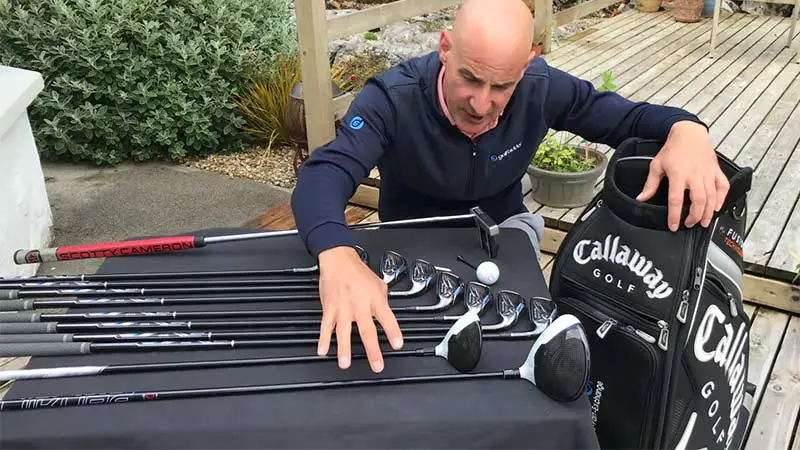






Colin McCarthy